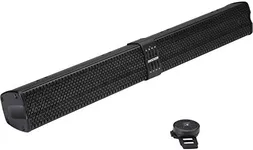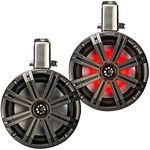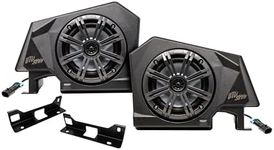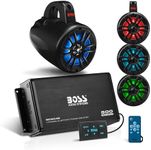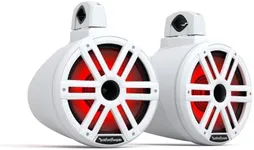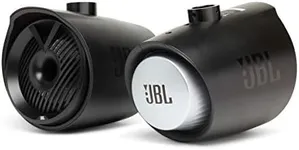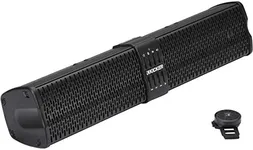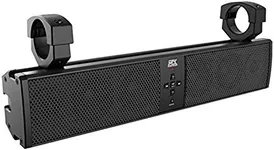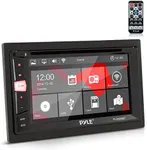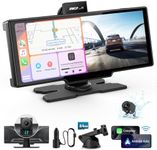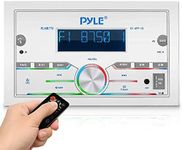Buying Guide for the Best Utv Speakers
When it comes to picking the right UTV (Utility Task Vehicle) speakers, it's important to consider several key specifications to ensure you get the best audio experience for your needs. UTV speakers are designed to withstand the rugged conditions of off-road environments while delivering high-quality sound. Understanding the key specs will help you make an informed decision and choose the right speakers for your UTV adventures.Power Handling (Wattage)Power handling refers to the amount of power a speaker can handle without getting damaged. It is usually measured in watts (W). This spec is important because it determines how loud and clear the sound will be. Speakers with higher wattage can produce louder and more powerful sound. If you enjoy loud music or have a powerful UTV sound system, look for speakers with higher wattage (e.g., 100W or more). For casual listening, lower wattage speakers (e.g., 50W) may suffice.
Weather ResistanceWeather resistance indicates how well the speakers can withstand exposure to elements like water, dust, and UV rays. This is crucial for UTV speakers as they are often exposed to harsh outdoor conditions. Look for speakers with an IP (Ingress Protection) rating, which tells you how well they are protected against water and dust. For example, an IPX5 rating means the speakers can handle water splashes, while an IP67 rating means they are fully waterproof and dustproof. Choose speakers with a higher IP rating if you frequently ride in wet or dusty environments.
Mounting OptionsMounting options refer to the different ways you can install the speakers on your UTV. This is important because it affects the ease of installation and the placement of the speakers for optimal sound. Common mounting options include roll cage mounts, surface mounts, and clamp mounts. Roll cage mounts are popular as they allow you to attach the speakers to the UTV's roll cage, providing a secure and elevated position. Consider your UTV's design and where you want the speakers to be placed when choosing the mounting option.
Speaker SizeSpeaker size refers to the diameter of the speaker cone, usually measured in inches. This spec is important because it affects the sound quality and the fitment in your UTV. Larger speakers (e.g., 6.5 inches or more) generally produce better bass and fuller sound, but they may require more space for installation. Smaller speakers (e.g., 4 inches) are easier to fit in tight spaces but may not deliver as much bass. Consider the available space in your UTV and your sound quality preferences when choosing the speaker size.
ConnectivityConnectivity refers to how the speakers connect to your audio source. This is important because it affects the ease of use and compatibility with your devices. Common connectivity options include Bluetooth, wired (auxiliary or RCA), and USB. Bluetooth connectivity allows for wireless streaming from your smartphone or other Bluetooth-enabled devices, providing convenience and flexibility. Wired connections may offer more stable audio quality but require physical cables. Choose the connectivity option that best suits your audio setup and preferences.
Frequency ResponseFrequency response indicates the range of frequencies a speaker can reproduce, measured in Hertz (Hz). This spec is important because it affects the overall sound quality and clarity. A wider frequency response range means the speaker can produce both low (bass) and high (treble) frequencies more accurately. For example, a frequency response of 20Hz-20kHz covers the full range of human hearing. If you want a well-balanced sound with clear highs and deep lows, look for speakers with a wide frequency response range.
